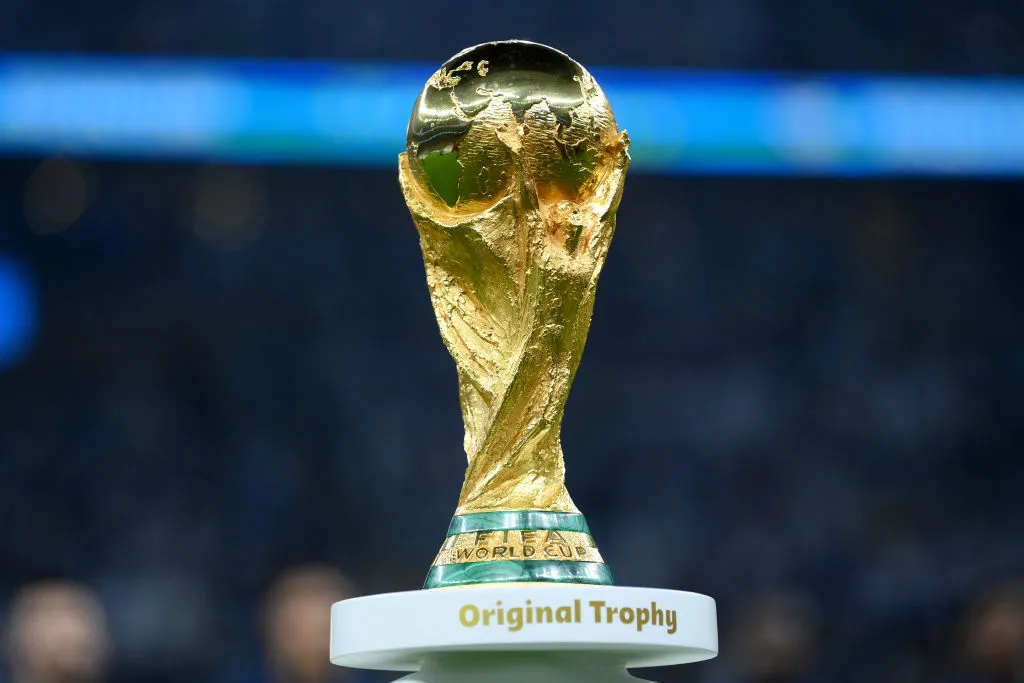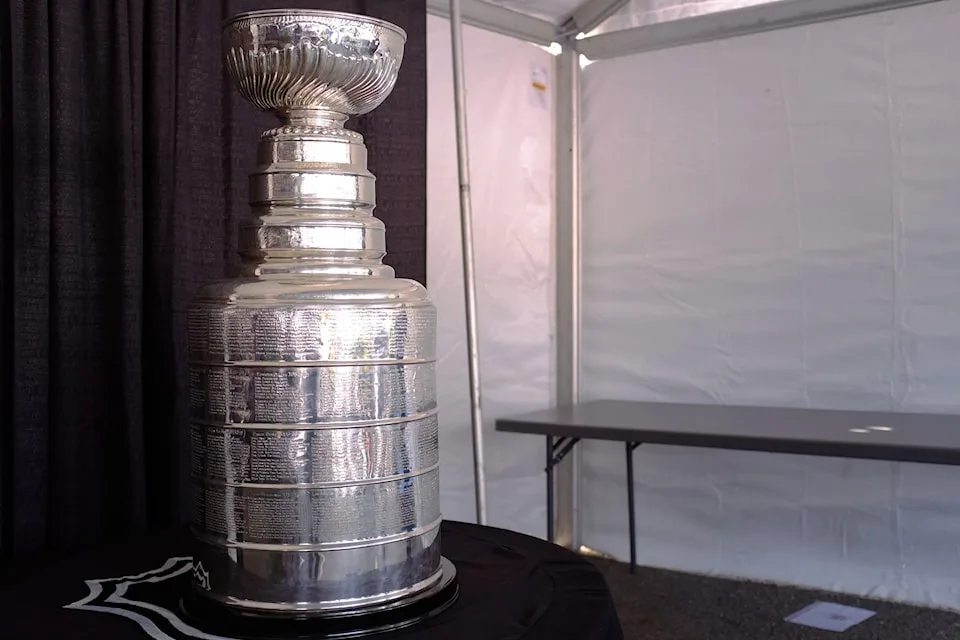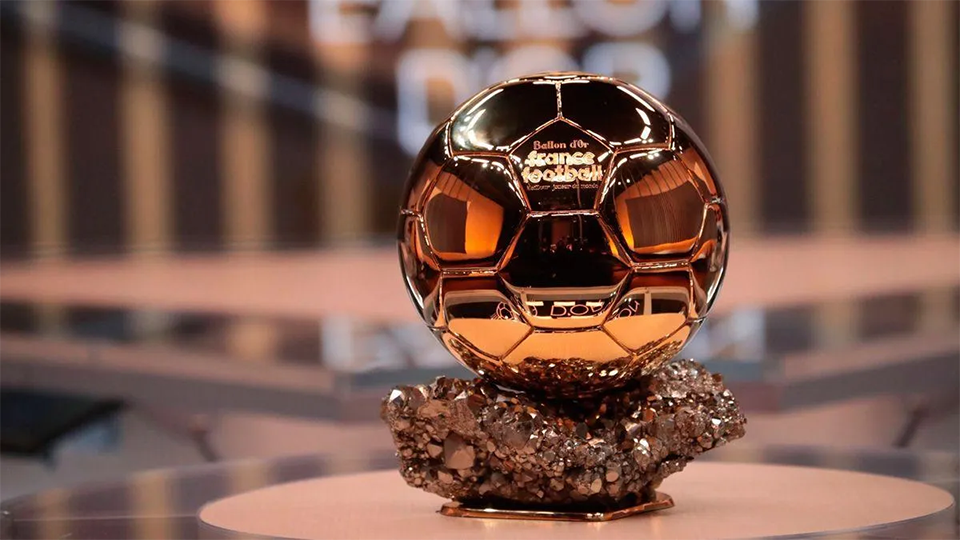The FIFA World Cup trophy stands as sports’ most valuable prize at $20 million in 2025, surpassing the cost of luxury mansions worldwide. This golden masterpiece leads an elite group of sporting awards that celebrate victory through precious metals and meticulous craftsmanship.
Behind football’s premier trophy, the Preakness Stakes’ Woodlawn Vase commands $2.5 million, while the Indianapolis 500’s Borg-Warner trophy follows at $1.3 million. The Stanley Cup, hockey’s cherished prize, carries a $650,000 value tag, matching the Ballon d’Or’s $600,000 worth.
Top 10 Most Expensive Trophy in the World as of 2025: Are you ready to uncover the stories that make these trophies priceless beyond their material value? From buried treasures during wartime to champions drinking champagne from silver bowls, each award carries traditions and tales passed down through generations of sporting glory.
Table of Contents
Top 10 Most Expensive Trophy in the World as of 2025
FIFA World Cup Trophy: The $20 Million Gold Masterpiece

Football’s ultimate prize gleams with $20 million worth of golden artistry. The FIFA World Cup Trophy, containing nearly 5kg of pure gold, commands attention as the sport’s most precious symbol of victory.
History and Evolution of the FIFA World Cup Trophy
“Victory” marked the trophy’s birth in 1930, later becoming the Jules Rimet Trophy in 1946 – named after FIFA’s visionary president. Nike, the Greek goddess of victory, adorned this first trophy, delicately balancing a golden cup. Brazil’s third championship in 1970 earned them permanent ownership rights.
The Jules Rimet Trophy’s story took dramatic turns. Pickles, a London dog, became a hero after finding the stolen trophy before the 1966 World Cup. Tragedy struck again in 1983 when thieves stole and reportedly melted the non-pure gold trophy after Brazil’s permanent possession.
FIFA’s 1974 vision brought fresh glory. Italian sculptor Silvio Gazzaniga’s design, chosen from 53 submissions, created the iconic trophy we celebrate today.
Materials and Craftsmanship Details
The trophy’s specifications speak to its grandeur:
- Height: 36.5cm
- Weight: 6.175kg
- Composition: 18-karat gold (75% pure)
- Structure: Hollow interior
- Base: Two layers of vibrant malachite stone
GDE Bertoni’s Milan factory blends tradition with innovation. Master craftsmen follow five precise steps:
- Brass body casting and chiseling
- Mechanical brushing and polishing
- Ultrasonic degreasing bath
- Triple gilding process
- Protective zapon varnish application
Two figures hold Earth skyward, symbolizing football’s global unity. The hollow design serves practicality – solid gold would prove too heavy for victory celebrations.
Security Measures for the Most Expensive Trophy in the World
Zurich’s FIFA headquarters guards the original trophy zealously. Public appearances remain limited to World Cup tours, draws, opening matches, and finals.
Tournament security rivals military operations. Venues implement strict traffic controls, enhanced checkpoints, and international police coordination. Qatar 2022 showcased unprecedented measures – NATO specialists trained forces in chemical, biological, radiological, and nuclear threats, backed by America’s Homeland Security.
The Trophy’s Cultural Impact
“The World Cup brings down cultural barriers,” Brazilian legend Dunga once reflected. “You go to a World Cup and feel happiness when you see people from all over the world—of all religions, education levels and backgrounds”.
This golden masterpiece bridges nations, uniting billions during finals matches. Communities worldwide share celebrations, forging friendships across continents.
Winners receive gold-plated bronze replicas, preserving the original’s mystique as football’s most recognized symbol.
Woodlawn Vase: Horse Racing’s $2.5 Million Sterling Silver Prize

Horse racing’s most precious trophy stands 36 inches tall, commanding a staggering $2.5 million insurance value in 2025. The Woodlawn Vase, presented to Preakness Stakes champions, tells a tale of survival through America’s darkest hours.
The Civil War History of the Woodlawn Vase
Robert Aitcheson Alexander commissioned this sterling silver masterpiece in 1860 for Kentucky’s Woodlawn Association. Mollie Jackson, a stakes-winning mare, claimed the inaugural victory at Churchill Downs in 1861.
The Civil War soon cast its shadow across American racing. Alexander faced a heart-stopping decision – bury the precious vase on his Woodburn Farm or risk Confederate soldiers melting it for ammunition. The trophy lay hidden until racing’s revival in 1866. After decades touring various tracks, 1917 marked its permanent home at the Preakness Stakes.
Tiffany & Co’s Craftsmanship
The vase launched Tiffany & Co’s legendary sporting trophy legacy. This 400-ounce (29 pounds) sterling silver marvel showcases unmatched artistry:
- Four winged victories grace the upper section
- A mounted jockey crowns the summit
- Intricate inscriptions and emblems adorn the surface
European Renaissance presentation cups inspired the design, symbolizing celebration and trust between hosts and guests. This masterpiece paved Tiffany’s path to creating iconic trophies like the Super Bowl and World Series prizes.
Why This Trophy Stays in a Museum
Until 1953, Preakness winners displayed the vase for a year. Today, the Baltimore Museum of Art guards this treasure.
“We do as little as possible… And we don’t use Brillo,” reveals museum curator David Curry. This gentle touch preserves the vase’s splendor, unlike many trophies damaged by frequent handling.
Insurance and Transportation Protocols
Each Preakness Stakes demands military precision. The vase travels five carefully planned miles from museum to Pimlico Race Course.
White-gloved police officers maintain constant watch. Maryland’s Army and Air National Guard provide ceremonial escort to the winner’s circle. Major Michael Singletary of the Maryland Jockey Club puts it perfectly – though insured for $2.5 million, this trophy remains “priceless”.
Borg-Warner Trophy: Indianapolis 500’s $1.3 Million Marvel

Are you ready to meet motorsport’s most fascinating prize? The Borg-Warner Trophy, commissioned for just $10,000 in 1935, now commands an astounding $1.3 million value. This sterling silver giant lives at the Indianapolis Motor Speedway Museum, where it tells racing’s greatest stories through silver and sculpture.
Unique Design Features of the Biggest Trophy in Motorsport
Robert J. Hill and Spaulding-Gorham, Inc. dreamed big with their Art Deco masterpiece. Standing 5 feet 4 inches tall and weighing 110 pounds, this colossus captures racing’s spirit through:
- Speed-symbolizing “wings” on each side
- A proud flagman holding the checkered flag at its peak
- A mysterious hollow body crowned with a removable dome
The trophy’s story keeps growing. Originally built for 70 winners, extra sterling silver bases joined in 1984, making room for champions through 2033. Hidden treasures lie within – only six base screws guard racing memorabilia sealed inside.
The Tradition of Adding Winner Sculptures
Here’s what makes this trophy truly special – every Indy 500 champion lives forever in sterling silver. Since 1990, sculptor William Behrends crafts these memories through pure artistry:
First comes life-sized recreation from 360-degree photos, then a delicate oil-clay model transforms into red wax before becoming polished silver. Even repeat winners get fresh portraits – Behrends starts each sculpture anew.
Materials and Maintenance Requirements
Eighty pounds of sterling silver demand respect. Professional artists restored this beauty in 1991 and 2004. Each victory brings 6-7 hours of careful engraving – name, year, and speed etched into racing history.
The ‘Baby Borg’ Replica Tradition
Champions since 1988 take home their own piece of glory – the “Baby Borg”. This 20-inch, 5-pound mini-marvel features:
- The winner’s sculpted likeness
- Victory details on its wooden base
- Original-quality craftsmanship
Team spirit grew stronger in 1998 when BorgWarner created the Team Owner’s Trophy, adding gold-touched race cars to celebrate unified success.
FA Cup Trophy: England’s $1 Million Football Heritage

The FA Cup trophy gleams with $1 million worth of sterling silver artistry. Football’s oldest prize tells England’s sporting story through five generations of silver masterpieces, each carrying tales of triumph, theft, and tradition.
The Evolution Through Five Different FA Cup Designs
Here’s how football’s most storied trophy transformed:
- Original “Little Tin Idol” (1872-1895): Sheffield’s Martin, Hall & Co crafted this modest 18-inch beauty for £20, before it vanished into mystery.
- First Replica (1896-1910): A twin rose from the original’s ashes.
- Fattorini Design (1911-1991): Bradford jewelers created the iconic look that captivates fans today.
- First Modern Replica (1992-2013): Toye, Kenning and Spencer protected the aging 1911 trophy’s legacy.
- Current Version (2014-present): Thomas Lyte silversmiths forged this enduring masterpiece.
Sterling Silver Craftsmanship Details
Master silversmiths pour 250 hours into each 61.5cm trophy, weighing precisely 6.3kg of sterling 925 silver[202]. Their hands spin, cast, chase, engrave, and polish until perfection emerges.
Antiques Roadshow’s Alastair Dickenson spotted something curious – those grape and vine patterns? They whisper tales of wine and champagne coolers rather than football glory.
Notable Theft Incidents and Security Improvements
September 11, 1895 marked the trophy’s darkest night. Three thieves stripped back a Birmingham shop’s zinc roof, smashed through the ceiling, and snatched both cup and coins.
The mystery haunted football until 1958. Harry Burge, aged 80, finally confessed – he’d melted England’s precious prize into counterfeit coins[213]. Today’s strict rules demand winners return the trophy by March 1st, or within seven days’ notice.
Replica vs. Original: What Winners Actually Receive
The FA Cup plays hard to get. Winners borrow rather than keep this silver beauty. Even the engraver races against time – just five minutes to immortalize champions where twenty should suffice.
Victory brings its own pageantry. Two-colored ribbons grace the trophy until the final whistle, when losers’ dreams fall away – a tradition born with Tottenham’s 1901 triumph. Champions lift their prize in Wembley’s Royal Box, though the silver soon returns home.
Stanley Cup: Ice Hockey’s $650,000 Legacy Prize

Hockey’s holy grail sparkles with $650,000 worth of sterling silver history. Since 1892, this legendary trophy has traveled a unique path – champions guard it for just one year before passing the torch to new victors.
The Unique Engraving Tradition of the Stanley Cup
Names tell the Cup’s story, etched forever in silver bands since 1924. Some ambitious teams started this tradition early, marking their rosters in 1907. Today, 2,603 names grace its surface, with 3,489 total including retired bands. Every 13 years, when space runs thin, the oldest band finds peace in the Hockey Hall of Fame.
Want to know who’s left their mark most often? The 1997-98 Detroit Red Wings packed 55 names onto a single band. But nobody touches Montreal’s Henri Richard – his name appears an astounding 11 times.
Material Composition and Structural Design
Lord Stanley of Preston never imagined his 10-guinea purchase (about $50 today) would become this 32.25-inch, 34.5-pound masterpiece of sterling silver and nickel alloy.
The Cup grew wild and tall by 1940, earning playful nicknames like “Stovepipe Cup” and “elephant’s leg Cup”. Order came in 1958 with the five-band barrel design, each band proudly displaying 13 championship teams.
Maintenance and Restoration Processes
Only four master engravers have ever touched this sacred silver. Louise St. Jacques has wielded the hammer since 1989, carefully striking each letter into bands clamped in special jigs.
Time claimed the original bowl and collar – too fragile for celebration’s rough love. Perfect twins took their place in 1963 and 1969.
Famous Stanley Cup Celebrations and Traditions
Here’s what makes the Cup magical – every champion gets 24 personal hours with silver history. Florida Panthers took it swimming in the Atlantic, while Tampa Bay Lightning paraded it through boat-filled waters in 2020 and 2021.
The 1896 Winnipeg Victorias started something special – victory’s first taste comes from champagne in the Cup’s bowl. Yet superstition runs deep – many players won’t dare touch it until they’ve earned the right.
America’s Cup: The $250,000 Sailing Trophy

Sailing’s “Auld Mug” commands $250,000 worth of sterling silver majesty . Beyond price tags, this Victorian treasure stands alone as sport’s oldest international prize still chased across ocean waves.
The Oldest International Sporting Trophy’s Design
London’s royal jeweler Garrard & Co shaped history in 1848, crafting a 1.1m sterling silver ewer weighing 14kg . Henry William Paget, 1st Marquess of Anglesey, chose this masterpiece as the “R.Y.S. £100 Cup” for the Royal Yacht Squadron’s 1851 Isle of Wight regatta .
Victory brought new identity – the schooner “America” claimed first glory, lending its name forever . Victorian artistry flows through every curve of its bottomless silver form . The America syndicate’s quill slipped slightly, marking it “100 Guinea Cup,” though “Queen’s Cup” sometimes graced royal lips .
Materials and Craftsmanship Evolution
Time demanded space for growing legends. New bases joined in 1958 and 1992, each matching the original’s grandeur . Oracle Team USA brought modern flair in 2007, crafting a carbon fiber foundation while preserving precious mahogany . Every challenger’s name lives forever on silver skin, each inscription adding chapters to sailing’s greatest story .
Security Protocols for the ‘Auld Mug’
“It would be like losing the Mona Lisa,” Cup official Tom Ehman declares . First-class luxury cradles this treasure in its custom Louis Vuitton trunk – a 150th birthday gift from 1998 . Public appearances demand white-gloved guardians and bulletproof shields ready to snap shut at danger’s first whisper .
The Trophy’s Insurance and Valuation Challenges
Silver worth merely $12,000 carries priceless heritage . Victory brings unique power – winners chart future courses, choosing battle grounds where rivals must follow . No insurance policy captures such sporting sovereignty .
Ballon d’Or: Football’s $600,000 Individual Honor

Football’s golden dream weighs 7kg and sparkles with $600,000 worth of precious metal. Since 1956, this gleaming sphere has crowned the beautiful game’s finest talents, one masterpiece at a time.
The Golden Ball’s Material Composition
Don’t let the name fool you – this trophy hides brass beneath its golden skin. Two meticulously joined disks transform into a sphere before pure 18-karat gold creates that magical shine. Nature adds her touch through pyrite – geologists hand-pick this unique stone yearly, ensuring no two trophies match. The final marvel stands 31cm tall, spans 23cm wide, and commands attention at 7kg.
Manufacturing Process and Annual Production
Magic takes time – 100 hours spread across six months. French jeweler Mellerio dits Meller has guarded this art since day one. Their master craftsmen start with simple brass “blanks,” coaxing hemispheres through ancient “repoussé” techniques.
Picture an orchestra of artisans – goldsmiths, chiselers, polishers, engravers, and gilders. Each plays their part in this golden symphony.
Design Evolution Since 1956
Stanley Matthews lifted a modest prize in 1956. The trophy grew bolder in 1983 when Michel Platini received a grander design. 2016 brought fresh brilliance – enhanced textures catching light in new ways.
Trophy Ownership and Display Protocols
Here’s what makes this prize special – winners keep their golden globe forever. France Football crafts three originals yearly – one for the champion, two for showing the world. Need a replica? Just ask – though Cristiano Ronaldo showed true spirit by auctioning his 2013 copy for €600,000, keeping the original safe in his museum.
UEFA Champions League Trophy: Europe’s $15,000 ‘Big Ears’

Football’s most famous ears cost just $15,000 in sterling silver. Yet this modest price tag belies the Champions League trophy’s status as European football’s ultimate prize, its distinctive handles reaching for glory across continents.
The ‘Big Ears’ Design Story and Symbolism
Languages celebrate those legendary handles differently – Spanish fans whisper “La Orejona,” Italians praise “La Coppa dalle grandi orecchie,” while Russians admire “Ушастый”. Swiss artisan Jörg Stadelmann shaped this silver dream near UEFA’s Berne headquarters in 1967, after Real Madrid claimed the original trophy for keeps. His hands worked magic – 340 hours of craftsmanship racing against time.
Materials and Weight Specifications
Sterling silver rises 73.5cm skyward, balanced perfectly at 7.5kg. Proud letters declare “COUPE DES CLUBS CHAMPIONS EUROPÉENS” across its face – a 1994 addition marking the Champions League’s bold rebirth. Five generations of silver have carried this legacy.
Replica Policy for Winners
Until 2009, true mastery earned permanent possession – five total victories or three straight triumphs. Real Madrid, Ajax, Bayern Munich, Milan, and Liverpool each guard their earned originals. Today’s champions lift replicas, though equally precious with their names forever etched in silver. Clubs crafting their own tributes must stay modest – 80% size maximum, clearly marked as homage.
Transportation and Security Measures
FedEx cradles this silver giant between Switzerland and glory. Wembley 2024 showed modern football’s careful touch – 2,500 camera-equipped stewards joined 2,000 police officers in history’s largest trophy guard. Two security gates stand between fans and their silver dream.
Bundesliga Meisterschale: Germany’s $57,000 Championship Shield

German football’s most precious plate sparkles with €50,000 ($57,000) worth of silver artistry. Art professor Elisabeth Treskow crafted this circular masterpiece in 1964, breaking away from traditional cup designs to create something uniquely German.
The Unique Shield Design Philosophy
Silver tells stories differently here. This 11kg shield spans 50cm across, its 925 sterling silver surface reflecting six decades of football excellence. 1. FC Köln first lifted this treasure in 1963, though its engravings stretch back to 1903 when VfB Leipzig claimed Germany’s first crown.
The 71.98-Carat Tourmaline Feature
Five precious green eyes watch over German football – 71.98-carat tourmaline gems set in golden frames. These stunning stones joined the shield’s silver ring in 1981, alongside fresh space for champions’ names. Each emerald gleam mirrors football fields where legends bloom.
Maintenance and Restoration Processes
Time demands space for new heroes. 1981 brought the first silver ring expansion, while the 2008/09 season welcomed five larger engraving plates. Modern engineering meets tradition, securing spots for champions through 2027.
Annual Presentation Ceremony
Championship drama unfolds uniquely here. Title races running to the final day see the original shield travel to league leaders while challengers eye replicas. Victory confirmed, DFL executives present this silver circle of excellence. Town hall balconies become stages, before museum walls welcome their temporary treasure home.
Serie A Trophy: Italy’s $66,000 Football Prize

Italian football’s funnel-shaped masterpiece commands $66,000 worth of gold and sodalite brilliance. Many call it “Scudetto,” but that honor belongs to the champion’s jersey badge worn proudly since 1924.
Design Elements and Symbolism
Ettore Calvelli dreamed in silver and gold when crafting the “Coppa Campioni d’Italia” in 1960. His 58-centimeter vision soars with:
- Deep blue sodalite base mirroring Italy’s soul
- Golden athletes frozen mid-stride
- Champion’s names etched in glory since 1960-1961
That distinctive funnel shape catches eyes and hearts, telling stories only Italian football could write.
Materials and Craftsmanship Details
Eight kilograms of artistry blend sodalite’s mysterious blue depths with gold’s eternal shine. Master hands cast, fill, buff, and polish – each touch adding to football’s most elegant prize.
The Trophy’s Evolution Over Time
Champions fought for glory since 1898, but silver dreams waited until 1961. Before then, the “scudetto” shield spoke silently from victory’s chest. League headquarters guarded this treasure until 2005, when passion demanded pitch-side presentations.
Presentation Traditions in Italian Football
Lega Serie A’s President plays high priest in football’s grandest ceremony. Queen’s anthem fills the air as players dance with their prize. Cities transform into carnivals – buses parade through seas of color, while concerts and celebrations echo for hours.
Trophy Treasures: A Value Comparison
Here’s your complete guide to the world’s most precious sporting prizes. From pure gold masterpieces to sterling silver legends, each trophy tells its own story through precious metals and timeless designs.
| Trophy Name | Value | Material Composition | Weight | Height/Size | Year Introduced | Notable Design Features |
|---|---|---|---|---|---|---|
| FIFA World Cup Trophy | $20 Million | 18-karat gold (75% pure) | 6.175kg | 36.5cm | 1974 | Two human figures holding Earth, malachite base |
| Woodlawn Vase | $2.5 Million | Sterling silver | 29 pounds | 36 inches | 1860 | Four winged victories, mounted jockey at summit |
| Borg-Warner Trophy | $1.3 Million | Sterling silver | 110 pounds | 5’4″ | 1935 | Decorative wings, winner sculptures added annually |
| FA Cup Trophy | $1 Million | Sterling 925 silver | 6.3kg | 61.5cm | 2014 (current version) | Grape and vine motifs, Victorian design |
| Stanley Cup | $650,000 | Sterling silver and nickel alloy | 34.5 pounds | 32.25 inches | 1892 | Five-band barrel design, engraved names |
| Ballon d’Or | $600,000 | Brass with gold plating | 7kg | 31cm | 1956 | Spherical design, pyrite base |
| America’s Cup | $250,000 | Sterling silver | 14kg | 1.1m | 1848 | Victorian-era decorative elements, bottomless body |
| Bundesliga Meisterschale | $57,000 | 925 sterling silver | 11kg | 50cm diameter | 1964 | Shield design, five tourmaline gemstones |
| Serie A Trophy | $66,000 | Gold and sodalite | 8kg | 58cm | 1960 | Funnel shape, blue sodalite base |
| UEFA Champions League Trophy | $15,000 | Sterling silver | 7.5kg | 73.5cm | 1967 | Distinctive large handles (“Big Ears”) |
From the $20 million FIFA World Cup Trophy to the beloved $15,000 “Big Ears” of the Champions League, each prize carries its own weight in sporting history. Notice how materials tell their own tales – pure gold for football’s highest honor, sterling silver for racing’s buried treasure, and precious stones marking German football glory.
Conclusion
Ten trophies, countless dreams, endless stories. From the FIFA World Cup’s $20 million golden glory to Champions League’s modest $15,000 “Big Ears,” these prizes carry worth far beyond precious metals and gemstones.
Each masterpiece writes its own legend. Picture the Woodlawn Vase sleeping beneath Kentucky soil during Civil War nights, Stanley Cup’s silver bowl catching champions’ champagne, or master craftsmen spending 100 hours breathing life into each year’s Ballon d’Or.
Modern guardians match ancient artistry. White-gloved hands and bulletproof glass shield these treasures while Louis Vuitton trunks carry sailing’s Auld Mug across oceans. Deep in Zurich vaults, football’s golden prize rests between World Cup journeys.
Yet perhaps their greatest value lives in young eyes watching heroes lift silver dreams skyward. These ten trophies don’t just mark victory – they guard sporting heritage, inspire tomorrow’s legends, and remind us why we play the games we love.
Read more:
- List of Highest Paid Footballers in the World in 2025
- Top 10 Highest Paid Football Managers in the World in 2025
FAQs
What is the most valuable trophy in sports?
The FIFA World Cup Trophy is the most expensive sports trophy, valued at approximately $20 million. Made of 18-karat gold and featuring a malachite base, it depicts two human figures holding up the Earth.
Which trophy has the most interesting history?
The Woodlawn Vase, awarded to Preakness Stakes winners, has a fascinating history. Valued at $2.5 million, it was buried during the Civil War to prevent it from being melted into ammunition. Today, it’s kept in a museum due to its value and historical significance.
How are names added to the Stanley Cup?
The Stanley Cup features a unique tradition of engraving winners’ names directly onto its silver bands. When the bands fill up (approximately every 13 years), the oldest band is removed and preserved in the Hockey Hall of Fame, ensuring the trophy doesn’t grow endlessly.
What makes the Ballon d’Or trophy special?
The Ballon d’Or, valued at $600,000, is crafted through a meticulous 100-hour process spanning six months. It features two brass disks gold-plated with 18-karat gold and a unique pyrite base selected annually by geologists, ensuring each trophy is one-of-a-kind.
How does the Bundesliga trophy differ from others?
The Bundesliga Meisterschale, worth $57,000, stands out with its shield design instead of a traditional cup. It features five 71.98-carat tourmaline gemstones symbolizing the field of play and has undergone strategic expansions to accommodate future champions’ names until 2027.








